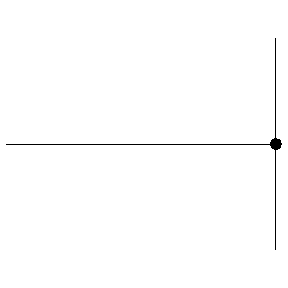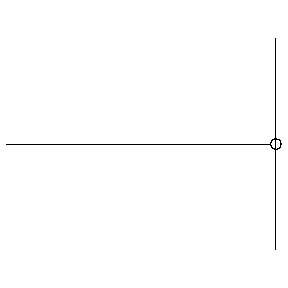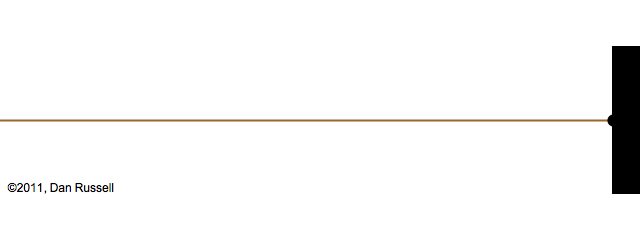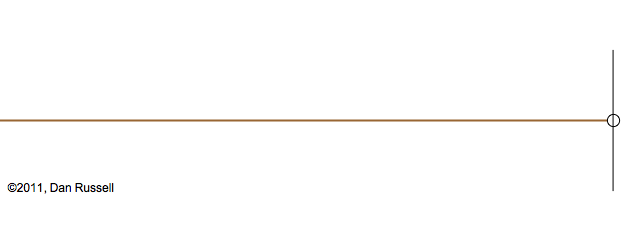When a sound wave encounters an object or discontinuity in the sound conducting medium, at least part of the sound is reflected. The way the sound reflects depends in large part on the rigidity of the reflecting surface. If the object is hard, like a substantial piece of metal, the wave reflects as shown below.

The hardness of the material prevents displacement. Notice that the surface does not yield to the arrival of the compression of the sound wave. As a result, there is a pressure generated at the interface in lieu of displacement. This results in a displacement node (no displacement) at the interface. When the sound wave encounters a surface that is softer, like a piece of plastic or rubber, the softer material allows displacement at the interface and the sound wave reflects as shown below.

Notice that in this case, the surface yields to the arrival of the compression of the sound wave. As a result, there is displacement generated at the interface in lieu of pressure. This results in a pressure node (no change in pressure) at the interface. This is very much like the discussion of resonance of a tube with and open end vs. a tube with a closed end that appeared in an earlier blog.
So, what does this mean when it comes to cleaning? In the case of a hard surface, because of the reverse phase reflection, the sound wave reflecting on itself looks like the following.

The formation of a displacement node where the sound wave intersects the reflecting surface results in a pressure anti-node (maximum pressure variation). Since cavitation and implosion are a result of changing pressure, the pressure anti-node at the interface provides an ideal site for cavitation and implosion at the surface for ultrasonic cleaning. When a sound wave reflects from a soft surface the result is as shown below.

In this case, a pressure node (area of minimum pressure variation) forms at the surface and, as a result, cavitation and implosion do not occur adjacent to the surface. In essence, a large portion of the sound energy is absorbed as the surface yields to the incoming compression with the reflected portion forming cavitation bubbles at some distance from the surface where they have minimal benefit to the cleaning process.
Although the models shown above are very simplistic, they illustrate the physics behind the variations in cleanability of surfaces we observe that can be associated with their physical properties.
– FJF –

 Water – De-ionized – Hints
Water – De-ionized – Hints  A Fond Farewell to John Fuchs
A Fond Farewell to John Fuchs  Millipore Testing – Evaluation by Particle Counting
Millipore Testing – Evaluation by Particle Counting  Tape Test for Cleaning Revisited
Tape Test for Cleaning Revisited